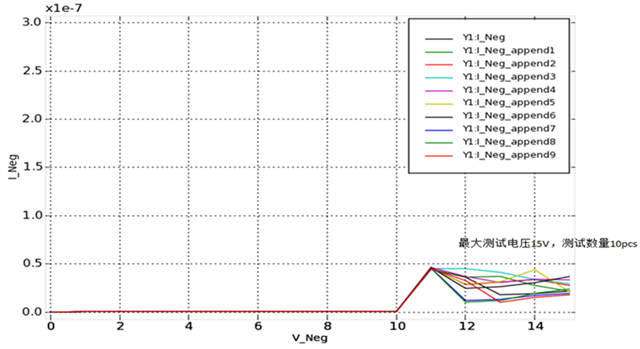Other Parts Discussed in Thread: TLC2274,
Hi Teams,
Hope you’re doing well.
Currently, my customer comes with a problem. May need your help.
Background: Due to the supply shortage of TLC2274, customer imported the TLV9064 into some of their products. But when manufacturing, they mixed the TLV9064 and TLC2274 wrongly, so some of their machine applied +5V -5V on TLV9064, which the absolute maximum supply voltage is 6V. However these machines are sent to their customers already, and no failure was reported until now. But their still want to find some technical info (potential risk) from us. Do we have some info about this?
Actions conducted by customer:
1, Customer has tested 10 pcs with semi IV test machine, and they found no shoot through below 10V.

2, Customer tested these 10 pcs samples with these working conditions and no failure and degradation was detected.(V+V-: +5V,-5V; A, Ta=25℃ 12h; B, Ta=-40℃ 12h; C, Ta=100℃ 12h)
Questions from Customer:
1, Based on the testing results, can we say TLV9064 can support 10V absolute maximum power supply?
2, Based on the testing results, can we say TLV9064 can work with +5V&-5V?
3, Can you recommend some testing methods which customer can conduct by themselves to evaluate the potential risks?
4, What will happen to TLV9064, after long term running with +5V -5V?
5, Do we have some info to evaluate the degradation of TLV9064 with +5V -5V power supply? How many effect will bring to the lifetime of TLV9064?
Looking forward to your feedback.


